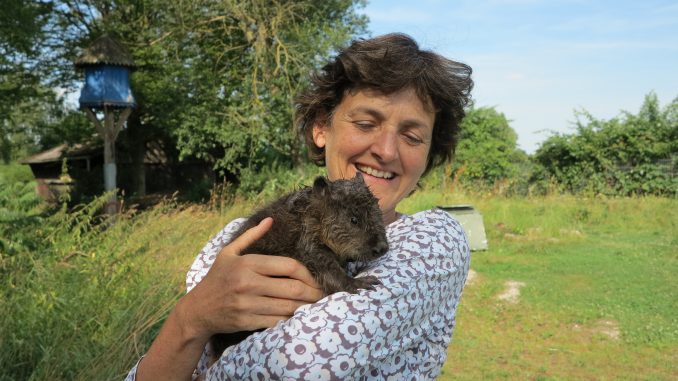
Wilding, redefining forests and reforestation without planting trees
We can’t express what big deal we think Isabella Tree’s book is and the revolution it spells out between it’s covers. If any of you haven’t heard of it, it’s the number 1 best selling environmental book of 2018. It’s unusually well written and the research that informs it is exemplary… and shocking… and hopefilled in a practical way.
This is why we are very pleased that Isabella Tree will be joining us for the Tree Conference in Frome on the 21st October 2018 .
We’ve been being told about the collapse of biodiversity in the UK but measurements like:
- Moths have declined 88% since the 1970s
- UK biodiversity is ranked 29th lowest in a 2016 State of Nature list of 219 countries
- Between the beginning of the war and the 1990s we lost 75,000 miles of hedgerows and 97% of our wildflower meadows
Suddenly what Chris Packham has been saying makes sense. Isabella Trees’s book explores the history of this collapse and the trends in farming policy through the eyes of the landscape of the Knepp Estate where her and her husband, Charlie Burrell, have embarked on a project to re-wild.
After decades of intensive farming, their 3,500 acres are now home to critically endangered nightingales, turtle doves and purple emperor butterflies, as well as burgeoning populations of other species. The success of Knepp, where habitats are created by free-roaming animals, is changing the way people are thinking about nature conservation. It demonstrates, among other things, how trees can regenerate without human intervention and how important this kind of dynamic, open wood pasture system is for our native wildlife.
What Oaks tell us about farming
We are particularly interested why the oaks on the arable land at the Estate sparked the epiphany (with the help of Ted Green from the Ancient Tree Forum) that lead to rewilding.
The process of ploughing so close to their trunks rips up the roots structures that oaks need and this was leading to the process of staging we see in so many oaks now.
An oak’s spread is way beyond the drip line of the leaves, he told us, to a distance of up to 2.5 times the radius of the crown…With oxygen available in soil only relatively close to the surface, the majority of a tree’s roots are found in the top 12 inches and therefore are vulnerable to ploughing and compaction… The delicate mycorrhizae are, inevitably, destroyed by the churning blades of ploughs. They are also highly susceptible to agricultural chemicals, whether in fertilizers or pesticides…. Even livestock dung, which is routinely loaded with the anti-worming agents (avermectins) and, often, antibiotics, can leach into the soil and destroy mycorrhizae.
From Wildling, By Isabella Tree
Oaks that would be expected to live for 900 to 1000 years old can dye off much earlier through the effects of farming practices that don’t bear their needs in mind. The irony is that oaks suit growing in hedges because it gives them the space for their vast canopies. Oaks support over 30 core species of bird and 300 different lichens. They place a core role in our our national history and their uses in our lives are wonderfully detailed both in Wilding and multiple other locations.
Now it seems that it is their health needs that might give us a road map for what we need to be doing to support the british landscape and we look forward to hearing what Isabella Tree has to say on the subject.
Isabella’ website is www.isabellatree.com.
The website for the rewilding project is www.knepp.co.uk.

Tickets to hear Isabella’s talk and the other world-class speakers at this year’s Tree Conference are £45 for the day and £25 for concessions and planting projects.
